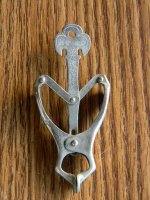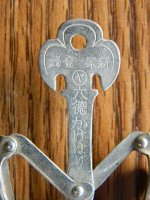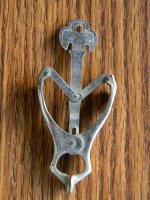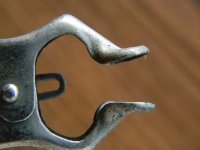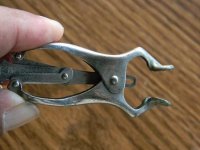808beginnerdigger
Full Member
- Mar 8, 2010
- 172
- 1
Found this at a Swap Meet here in Hawaii. It's 3-1/2" long by 1-5/8" wide. It has a spring-loaded action and acts like a clamp. I have also seen one with "rubber-type" inserts at the end to facilitate in gripping or to keep from scratching the surface it is being clamped to. Very interesting piece. Any Ideas? Mahalo! & Aloha from Hawaii...


